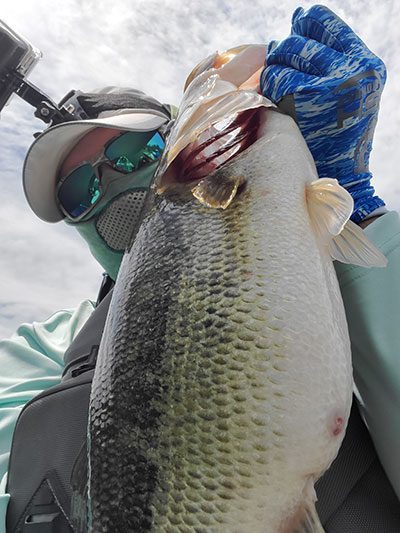We are once again entering a transition period of the year. Just like spring, anglers wait for this moment all season. Bass get very active in preparation for winter. They will start schooling once again and feeding heavily on shad. In this situation, an angler can play off the bass response to compete with other bass for an easy meal.
Having the knowledge to know where to look, in relation to where the shad are located, and where the bass are is key to success this time of year. Bass will start to break away from their summer spots on the main points to start the journey to the secondary points, to the backs of the creeks, before their journey back for the winter. It is also important to understand the fundamentals of knowing the anatomy of a lake or you will not even know where to start. You need to have a basic understanding of how your electronics work to get all the clues you need in locating bass and shad. Two structures to look for will be the secondary points and the pockets. Schools of bass will use these structures to ambush shad. Once the nights start to get cool, start checking the pockets to see if bass have corralled the forage.
Plan for the right baits to be tied on because you will be cycling your set ups until you find what they want. You will notice that some baits work better in some situations. The biggest mistake you can make is to just stick with one bait. Even if you had some good bites on a specific lure, it does not mean it will work in every situation. The situations will be weather, mood, cover, structure, and water condition. Start with the basics, such as spinner baits, swim baits, jerk baits, walking baits, flukes, crank baits, jigs, and chatter baits. These baits will cover the situations you will work through. There is so much more you can use but you will figure this out the better you get.
This is also the time the water will start to flip. You will know when the water starts to get very clear that this is happening. If the bass seem finicky, try to downsize your line to see if it helps or back off a few yards. You will also be going to those more natural colors and cutting back on those bright summertime colors. Once the water clears you will need to make longer cast so you are not seen close to the bait. Longer rods will aid you in this situation. A good quality reel will also help in a longer cast as well. When you start seeing blow ups, you will see the reasoning behind longer casts. If you’re having difficulties and frustrations, it is probably because you do not have the distance you need.
Be sure you know the basics and build on your plan from there. Visit often so you can track your fish. This will help build confidence. Have fun this time of year and introduce a friend or family member to fishing.
Scott Norton is a Western North Carolina native. Born in Asheville, N.C., he is a long-time hunter, angler, and weekend warrior.
